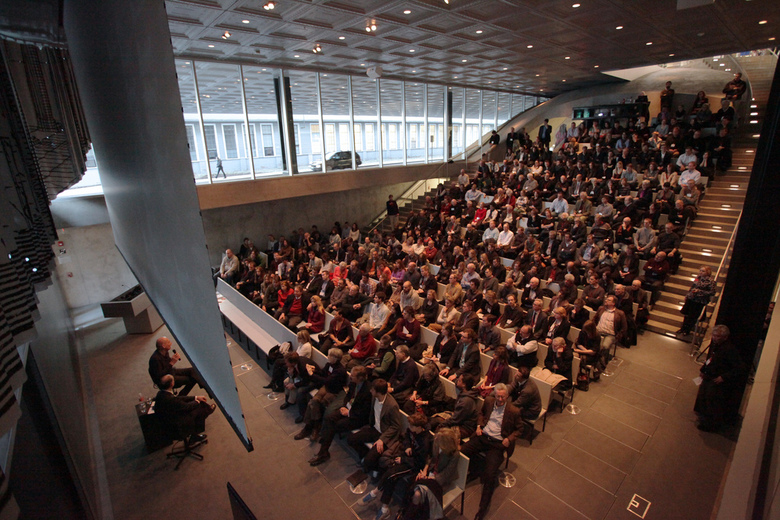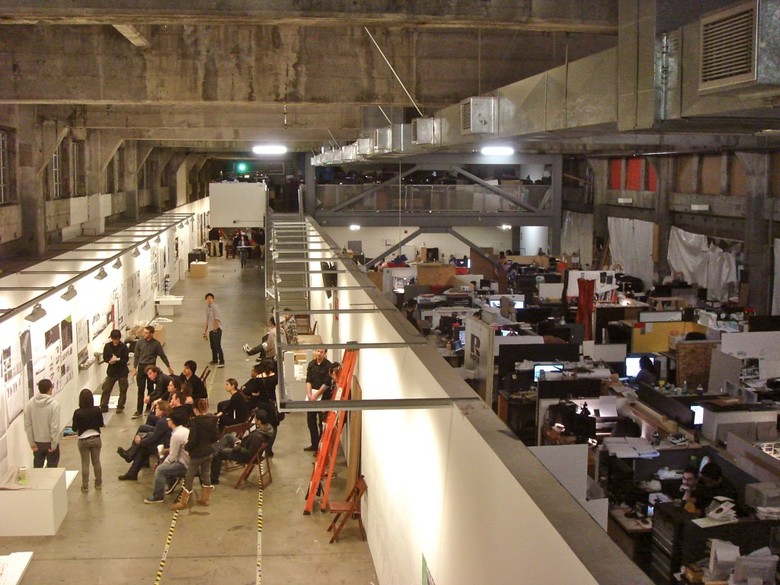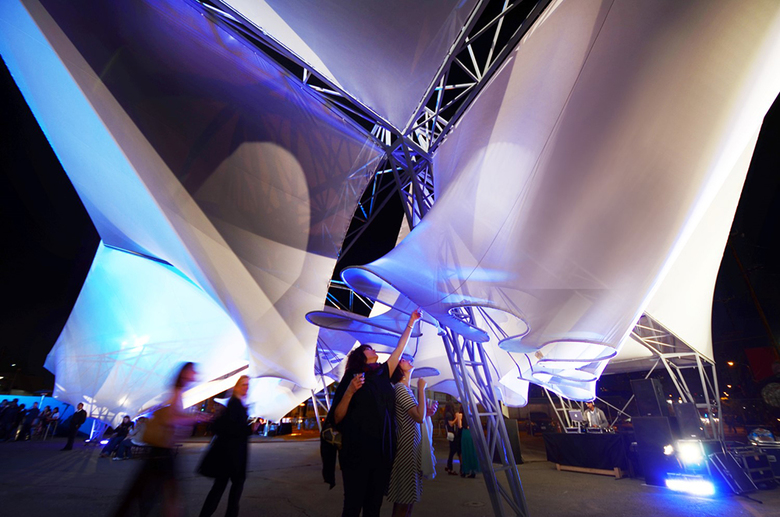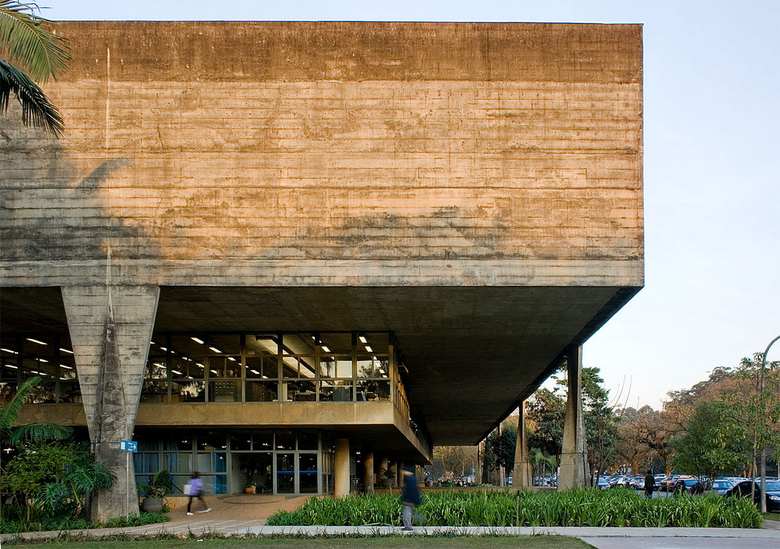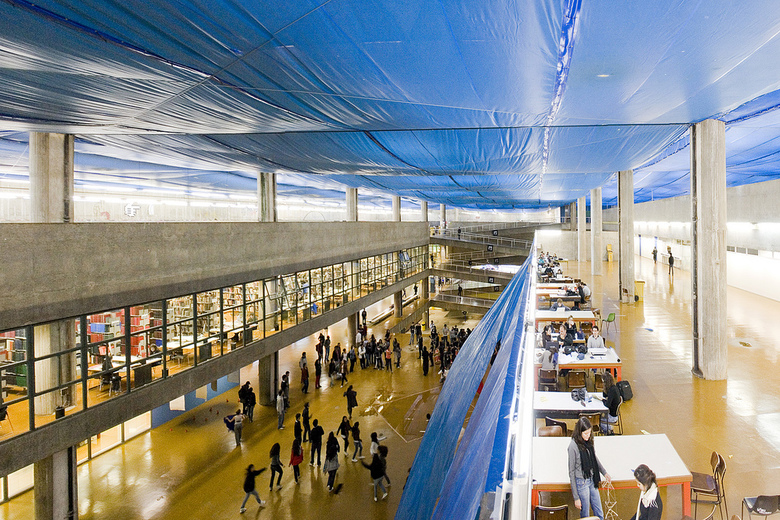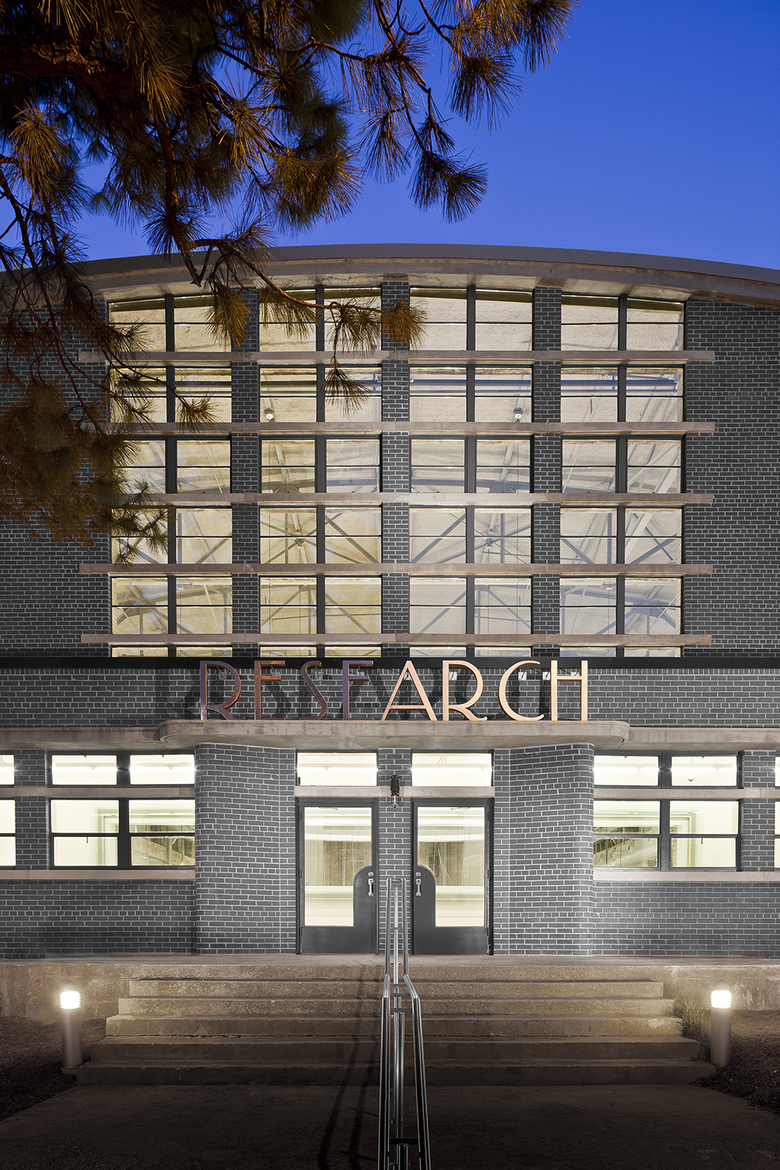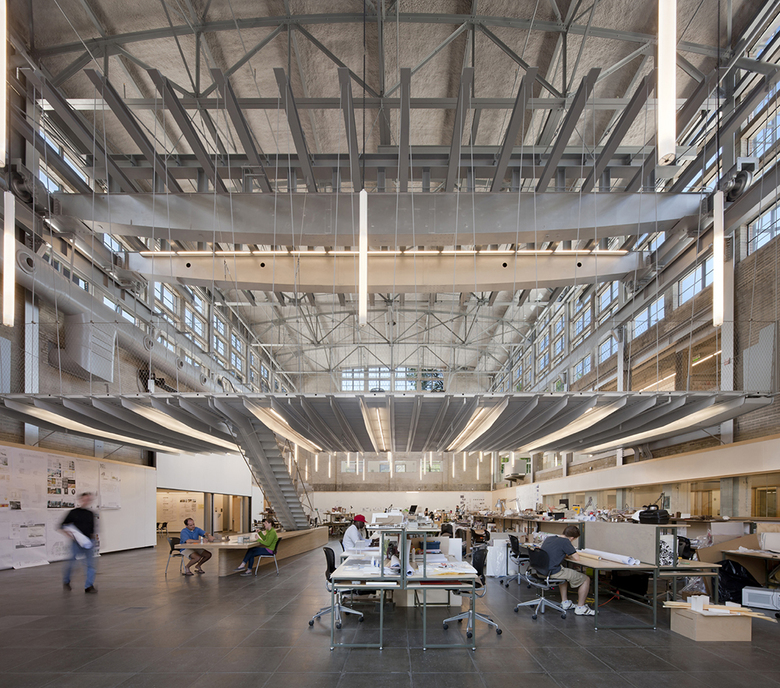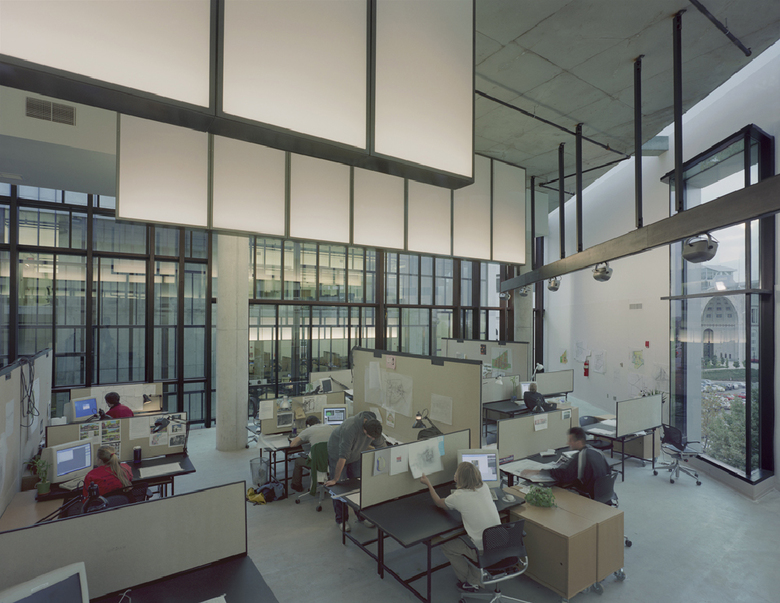Spaces for Learning
The end of summer also means the beginning of the school season, so as students head off to architecture school we present a selection of distinctive "spaces for learning." With the understanding that students learn as much from their environment as their professors, it's no wonder that universities take great care in their buildings, especially architecture schools. This feature looks at some of these buildings and the studios and lecture halls inside them.
Cornell University AAP
Ithaca, New York, USA
Milstein Hall
2011
Office for Metropolitan Architecture
OMA's completed design for Cornell University's College of Architecture, Art and Planning (AAP), could be called Milstein Hall 3.0. Both Steven Holl and Barkow Leibinger were slated at one time to design the building, but it was OMA's reuse of the existing AAP buildings—Rand Hall and Sibley Hall—that allowed them to hold on to a job that their predecessors couldn't. Rem Koolhaas and Shohei Shigematsu placed the studios in one contiguous space on the second floor (an overhead shot of the studios can be found on the title photo at top), a volume that cantilevers over the roadway and a plaza. An auditorium and a domed gallery for presentations are also tucked under the studio level.
As a space for teaching tomorrow's architects, Milstein Hall preaches openness through the open studios, preservation through its reuse of and connection to the existing buildings, structural logic through the exposed trusses that enable the sizable cantilever, and sustainability through features like "chilled beams" and a green roof visible from the upper floors of Rand and Sibley Halls. The 253-seat auditorium is visible from the plaza through glass walls, functioning as a central event space for the college.
Harvard University Graduate School of Design
Cambridge, Massachusetts, USA
Gund Hall
1972
John Andrews
Harvard University is the oldest institution of higher learning in the United States, dating back to its founding in 1636, but it would take exactly 300 years for the formation of the Graduation School of Design (GSD). It wouldn't be until 1972 that the prestigious school moved into its current home, Gund Hall, designed by Australian architect John Andrews, a graduate of the GSD. Gund Hall's Brutalist architecture is lifted high on round columns along Quincy Street, from which it descends ziggurat-like for five stories to the east.
Underneath the sloping clear-span glazed roof are the studios, known as "The Trays," accommodating 500 students across the five terraced levels that define smaller work areas yet also foster interaction among the students working on different projects in different years. Most importantly the trays define what Dean Mohsen Mostafavi calls "a sense of community and togetherness." Piper Auditorium accommodates the myriad lectures and symposia at the GSD. In the below photo it is set up as "half Piper," but for larger events seating on the floor beyond the retractable screen transforms it to "full Piper."
Southern California Institute of Architecture
Los Angeles, California, USA
Sante Fe Freight Yard Depot
1907/2001
Harrison Albright/Gary Paige Studio
If Harvard is the nation's oldest higher-ed institution, the Southern California Institute of Architecture (SCI-Arc), 3,000 miles away, is one of its youngest, having turned 40 in 2012. In that time the school has been served by four directors: Ray Kappe, Michael Rotondi, Neil Denari, and Eric Owen Moss. In 2000 the school moved into a Sante Fe Freight Depot on the edge of Downtown, then a no-man's land of sorts but now an integral ingredient in the city's arts district. The quarter-mile-long (400m) building, renovated by SCI-Arc graduate and faculty member Gary Paige, serves 500 students in a continuous space that places studios parallel to spaces for presentations and exhibitions.
Befitting its Los Angeles locale, a large parking lot is located on the west side of the building. SCI-Arc takes advantage of this real estate in a number of ways, such as building its entry to the 2011 Solar Decathlon and erecting pavilions for graduate ceremonies. To celebrate its 40th anniversary, the school commissioned faculty members Dwayne Oyler and Jenny Wu to design and assemble the Storm Cloud pavilion, a party venue sitting on the lot. The spandex stretched across the curving frame taps into SCI-Arc's self-consciously experimental nature, but its construction from the pieces of previous graduate pavilions illustrates deeper concerns at play.
Architecture and Urbanism College of University of São Paulo
São Paulo, Brazil
Caramel Hall
1972
João Batista Vilanova Artigas
Founded in 1948, the Architecture and Urbanism College of University of São Paulo (FAU USP) realized its main building in 1960, designed by architect and professor João Batista Vilanova Artigas. As a prominent figure in the faculty, Artigas not only shaped the Brutalist building but also its curriculum, which looked to the Bauhaus to place technical skills, history, and design on par with each other. The building created a synergy with this emphasis through a large central atrium serving students as well as a setting for political and cultural events.
Studios, library, and other functions are adjacent to the central space on levels with shallow floor-to-floor heights. These spaces borrow light from the skylit atrium but, as the blue tarp in the above photo attests, the skylights in the 50-year-old building are in need of repair. Yet, even as the political climate of Brazil has changed considerably since Artigas's day, his embrace of an egalitarian space for political and personal expression remains. Photos of the atrium being used for all sorts of assemblies (such as a 2009 strike meeting, below) are easy to come by. And when seen relative to the early summer protests over the Brazilian government's spending, the space holds even more prescience.
Georgia Tech College of Architecture
Atlanta, Georgia, USA
Hinman Research Building
1939/2011
P.M. Heffernan/NADAAA
In 1939, when the Hinman Research Building was completed, it served as the Georgia Tech Engineering Experiment Station. The building was designed by Professor P.M. Heffernan, who served as director of the College of Architecture from 1956-76. In 2011 the building reopened as an annex for the architecture school per a redesign by NADAAA (formerly Office dA). Studios now occupy the central hall that formerly housed industrial R&D facilities and a machine shop.
The building's original gantry crane is used to hang a mezzanine, adding 3,000 square feet (275 square meters) to the 32,000-sf (3,000-sm) building. A new straight-run stair provides access to this elevated space, while a mesh-covered spiral stair serves the faculty offices on an upper floor adjacent to the central hall. A large retractable wall can be raised for events, such as the performance, Theater of the Imagination, from the College of Architecture's opening festivities.
Ohio State University, Austin E. Knowlton School of Architecture
Columbus, Ohio, USA
Knowlton Hall
2004
Mack Scogin Merril Elam Architects
With enrollment numbers of close to 60,000 undergraduate and graduate students, Ohio State University (OSU) is perennially one of top three most populous schools in the United States. Befitting such a large school, OSU has a sizable campus north of downtown Columbus. The Austin E. Knowlton School of Architecture—serving a manageable 600 students—sits on a corner just north of the university's "oval," overlooking the OSU football stadium and its ancillary parking. This edge condition influenced Mack Scogin and Merrill Elam's competition-winning design for the 176,000 square foot (16,350 square meter) building.
The roughly rectangular block extruded from the site is carved to create a corner plaza and other spaces. Views across these outdoor rooms—from studios to circulation, primarily—act like miniature urban voids. A series of ramps bisects the building in the long direction, separating the two halves of the building but also activating the predominantly open spaces. Adjacent to this circulation spine is a double-height space with seating for various events (a formal auditorium is located in a far corner of the building). This space sits roughly in the center of the building to serve as the heart of the school.
Strelka Institute for Media, Architecture and Design
Moscow, Russia
Former Red October Chocolate Factory
2010
Wowhaus Bureau
The newest school on the international architectural scene is the Strelka Institute, spearheaded by Alexander Mamut, Sergei Adonyev, Ilya Oskolkov-Tsentsiper, Dmitry Likin and Oleg Shapir in 2009. They commissioned Rem Koolhaas and the AMO arm of the Office of Metropolitan Architecture to develop an educational program that introduces research as "the most essential basis of architectural education," per AMO. Wowhaus Bureau, co-owned by Dmitry Likin, oversaw the transformation of the former Red October Chocolate Factory on an island in the Moscow River, creating studios, an outdoor amphitheater, a bar, and a roof terrace. If their transformation looks temporary, that's because it is. The Strelka Institute has a five-year-lease on the property; evenutally it will be developed with adjacent parcels as luxury housing.
Wowhaus envisioned the design as a "third space," mixing the realms of home and work/study. The courtyard, bar, and roof terrace certainly serve this goal, as does the predominantly wood-slat architectural expression and the way the spaces flow into each other through openings and changes in grade. The studios are housed in former garages that face the courtyard, which is covered in the cold months. The bar and roof terrace have become a popular destination in the area, for more than just students who can easily blow their monthly stipend (uniquely, the school is tuition-free) on the drinks and food.
RMIT University
Melbourne, VIC, Australia
Design Hub
2012
Sean Godsell Architects, with Peddle Thorp Architects
As design practices break down the boundaries between disciplines—architecture, graphic design, industrial design, landscape architecture, urban design, and so forth—universities are doing the same, by encouraging students from different disciplines to work together and, in the case of RMIT University, placing them in the same building. The Design Hub accommodates postgraduate design students in flexible open-plan "warehouses" that allow research teams to carry out their projects of varying needs. The building also includes exhibition spaces, a design archive, a lecture hall, seminar rooms, and a rooftop space for seminars and other functions.
In parallel to the flattening of disciplines inside the building, Godsell and Peddle Thorp repeat a single element—glass disks—across each elevation. But what looks repetitive is actually variable, as the disks automatically pivot to receive the maximum amount of sunlight. Currently the disks are sandblasted glass, but they can be replaced easily with solar panels as the technology improves. As is, the disks are tuned to the weather to improve daylighting and passive heating and cooling. Like the Design Hub's mission, the building's expression bridges disciplines—architecture, engineering, and technology.
Yale University School of Architecture
New Haven, Connecticut, USA
Paul Rudolph Hall
1963/2008
Paul Rudolph/Gwathmey Siegel Architects
Combined with the above buildings for Harvard GSD and FAU USP, Yale's Paul Rudolph Hall (formerly Art + Architecture Building) attests to the popularity of Brutalist architecture in the middle of last century, particularly in buildings by and for architects. Rudolph designed the building when he was Chair of the Architecture Department, and when a restoration and expansion by former student Charles Gwathmey was completed 45 years later the building was renamed in Rudolph's honor. Perhaps the most remarkable attribute of the original design is not the rough concrete found inside and out but the fact its 9 stories are spread across 37 levels, creating a complex spatial landscape oriented about the central exhibition and jury spaces.
A surprise comes in the orange carpeting that is a lively counterpart to the poured-in-place concrete. Found in the circulation spaces, the central exhibition and jury spaces, and inside the basement-level Hastings Hall (below), the orange works remarkably well in softening the Brutalist architecture and in reinforcing the importance of these spaces of presentation, be it the work of students or practicing architects.
Delft University of Technology Faculty of Architecture and The Built Environment
Delft, Netherlands
BK City
1917/2009
Fokkema, Braaksma & Roos, Kossman.dejong, Octatube, and MVRDV
On 13 May 2008, the building housing the Delft University of Technology's Faculty of Architecture caught fire, leading to the partial collapse of the Brutalist building but thankfully no fatalities. The faculty moved into makeshift facilities in TU Delft's former main building on Julianalaan. Subsequently, five firms were hired—Fokkema, Braaksma & Roos, Kossman.dejong, Octatube, and MVRDV—to transform the nearly 100-year-old, 32,000-sm (345,000-sf) building into BK City, the new home for the school of architecture. In addition to the reconfiguration of the labyrinthine building for lecture halls, studios, offices, workshops, a library, a restaurant, and informal places, two new glasshouses add 3,700-sm (40,000-sf) for studios, exhibitions and events.
These atria spaces add some grandeur and transparency to the otherwise intimately scaled and solid architecture of the transformed Julianalaan building. A standout is the bright orange ziggurat designed by MVRDV to house The Why Factory, an independent research unit that was actually founded by MVRDV partner Winy Maas. Studios and seminar spaces are located underneath the wooden steps, though the rest of the school can occupy the steps and desks around them for their work. The steps are also used for presentations, exhibitions, and even graduation ceremonies. The central location and orange color guarantee this atrium space works as a wayfinding device, an important element in such a large building.



